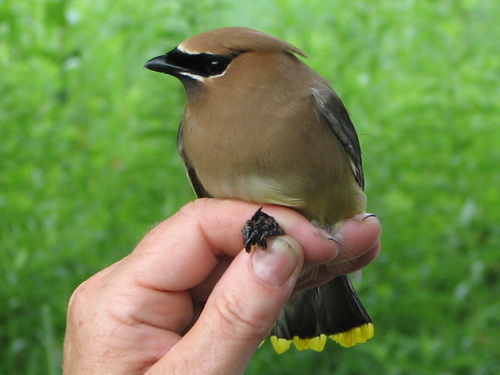Last summer I had the opportunity to volunteer at a (temporary) banding station at Rollins Savanna, a preserve in the Lake County Forest Preserve District. The banding station followed the MAPS protocol, which basically means we were doing a breeding bird survey. We went out approximately every ten days during the summer months. The data will be analyzed over time to look at how the habitat is being used by breeding birds, like this Cedar Waxwing we banded on June 20th.

I was able to join the team at Rollins Savanna after attending a forest preserve banding demonstration in 2009 and talking the MAPS group during their 2009 season. I wanted to learn more about birds and more about the banding process. It was a great experience, I certainly learned a lot, but there is much more to learn. Now that the banding season is over, I’ve been reading more about how bird banding data benefits conservation science, and ultimately the birds themselves.
We learn about how birds age.
We learn about bird migration.
Of course these extreme records are interesting, but a lot of data gleaned from bird banding is about averages and trends. Breeding success data helps land managers determine where habitat restoration or maintenance resources will best benefit the birds. Migration data helps scientists understand changes in bird populations and helps environmental groups working to help birds on both breeding and wintering grounds. If you’d like to learn more about bird banding and data collection, some excellent resources are listed below.
Further reading:
Bird Ringing for Science and Conservation (pdf)
Fat Birder’s Banding & Ringing page
North American Bird Banding Manual



